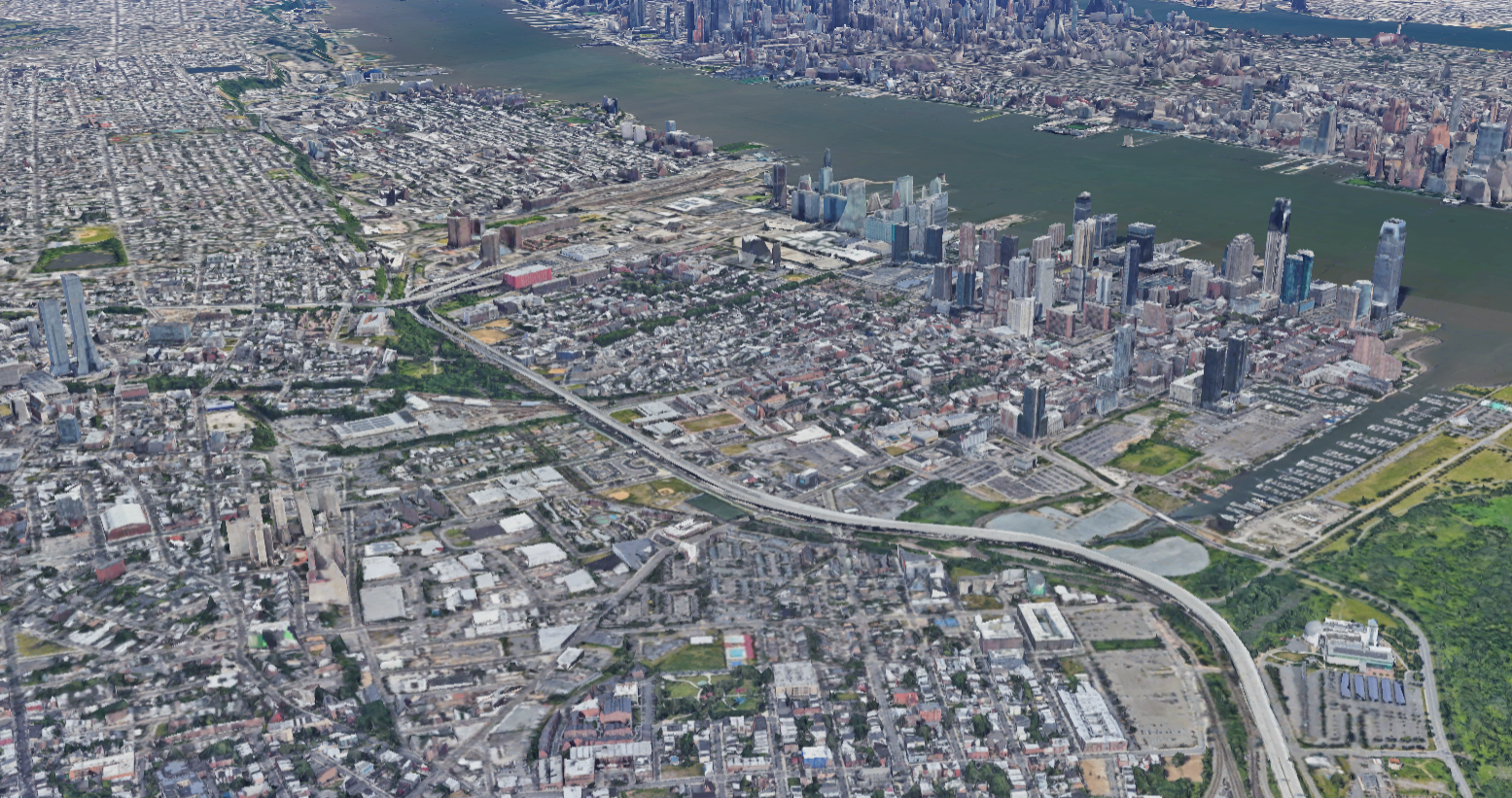Repeating the Mistakes of the Past: No New Jersey Turnpike Widening
Widening the New Jersey Turnpike through urban Jersey City should be unthinkable. Image: Google, © 2022 Landsat/Coperniucs Data SIO, NOAA, US Navy, NGA, Gebco
The Effective Transit Alliance is dismayed to learn that Governor Murphy is backing a $4.7 billion widening of the New Jersey Turnpike through the heart of Jersey City. In a moment when the entire region—and indeed, the entire world—is focused on both mitigating climate change and improving the livability of our cities, a policy of widening urban highways should be unthinkable. The project would induce more interstate and intrastate driving at a time when the region should be investing in ways to decrease private car use. What’s more, because the project adds no cross-Hudson capacity, it will only lead to even worse congestion in the Holland Tunnel and on the roads that feed it. And worst of all, this project is part of an outdated capital plan full of highway widenings, all of which will directly spur more emissions, more traffic injuries, and more traffic deaths.
There is a conflict between spending money on widening roads and spending money on improving and expanding mass transit. Simply put, expanding road capacity encourages travelers to drive, pulling them away from transit and eventually spurring transit cutbacks that leave remaining riders with worse service.This is only made worse by the location of the proposed widening. Jersey City is a fast-growing and vibrant urban city, not to mention a prime spot for additional residential and commercial transit-oriented development. The second most populous city in the state, Jersey City possesses not only tremendous transit connectivity to the rest of Hudson County via Hudson-Bergen Light Rail, but also quick access to both Midtown and Lower Manhattan via PATH trains. It is particularly well-suited to benefit from and synergize with the intense redevelopment of Lower Manhattan that has been undertaken over the last twenty years. Conversely, highway expansion means congestion, noise, air pollution, and a wall to urban growth, all in an area that should anchor a regional sustainable growth strategy. Recognizing these damages, the councils of both Jersey City and Hoboken unanimously passed recent measures opposing the Turnpike expansion, and Jersey City Mayor Steven Fulop has reaffirmed his stance against the project.
Instead of following the disastrous twentieth-century playbook spending $4.7 billion on urban roads, New Jersey should instead be following a twenty-first-century strategy: improving its light rail, regional trains, and bus systems. One alternative to expand capacity between Newark and Jersey City worth considering is building a connection between the Hudson-Bergen Light Rail and Newark Light Rail along a disused rail right-of-way, as Jersey City leaders have suggested. This project would tie into the planned Route 440 Extension, improve transit in Newark’s Ironbound neighborhood, and provide access to industrial jobs in Kearny that currently require circuitous bus trips to reach by transit.
New Jersey should be investing in its rail network, including electrification.
The state must also commit itself to funding the Gateway Program, and in particular, the Hudson Tunnel Project. The state should work concurrently to upgrade its rail operations serving Manhattan and Hoboken to take advantage of this increase in trans-Hudson capacity, including electrifying diesel lines such as the outer North Jersey Coast Line and acquiring more equipment. It should also designate lanes on key roads as bus-only in order to speed up transit trips, making them both faster and more reliable.
Looking across the rest of the country, the United States Department of Transportation recently upgraded its guidance on “flexing” highway funds to other transit modes, while the State of Colorado dropped all highway expansion plans earlier this year in the face of fiscal, socio-economic, and environmental realities. Instead of doubling down on a mid-twentieth-century approach to infrastructure that has been demonstrated to drive communities into fiscal insolvency, reinforce socio-economic inequalities, and exacerbate risks from climate change, the State of New Jersey now has the opportunity to set a new precedent that builds community wealth and enables effective and equitable climate action, all while strengthening and protecting its largest cities.


